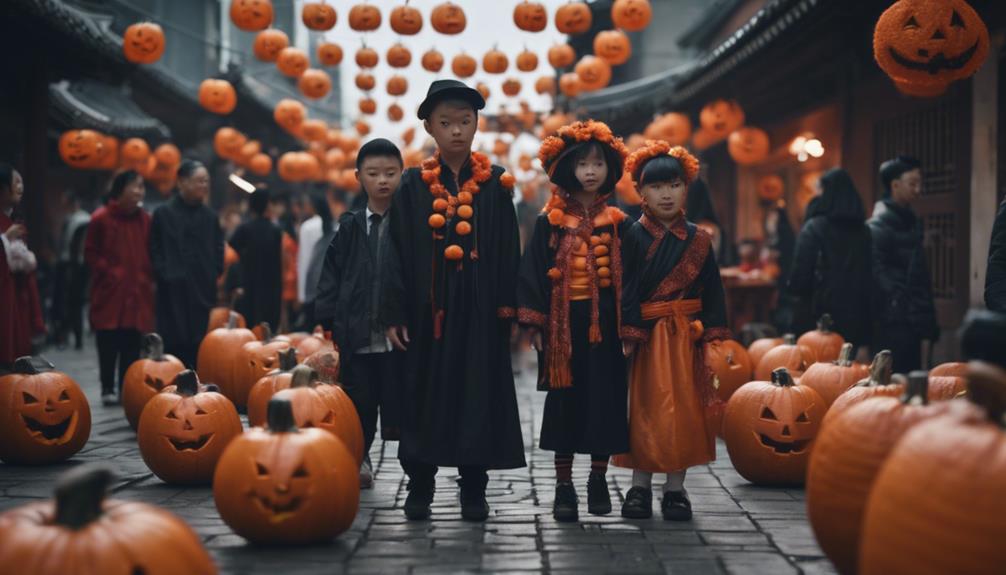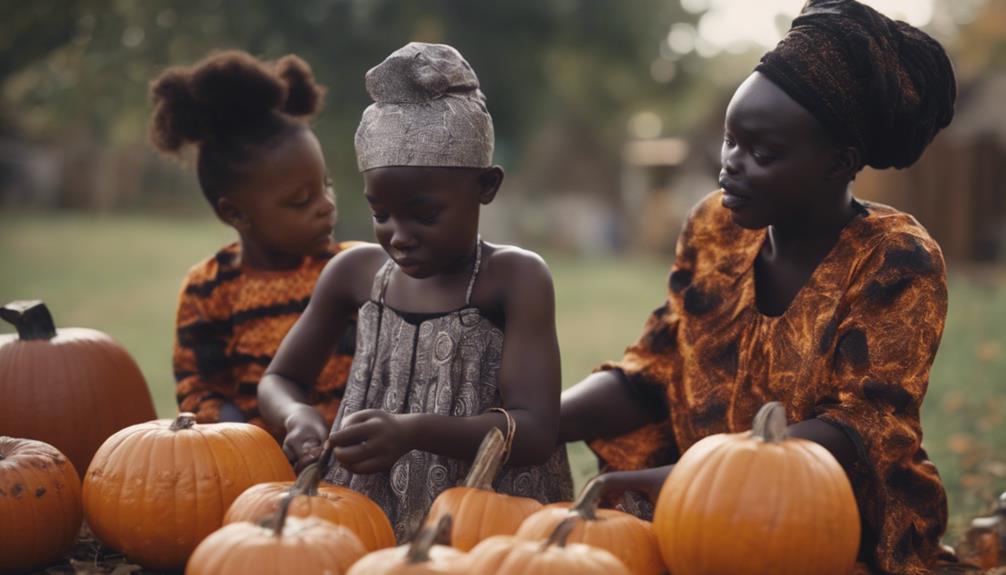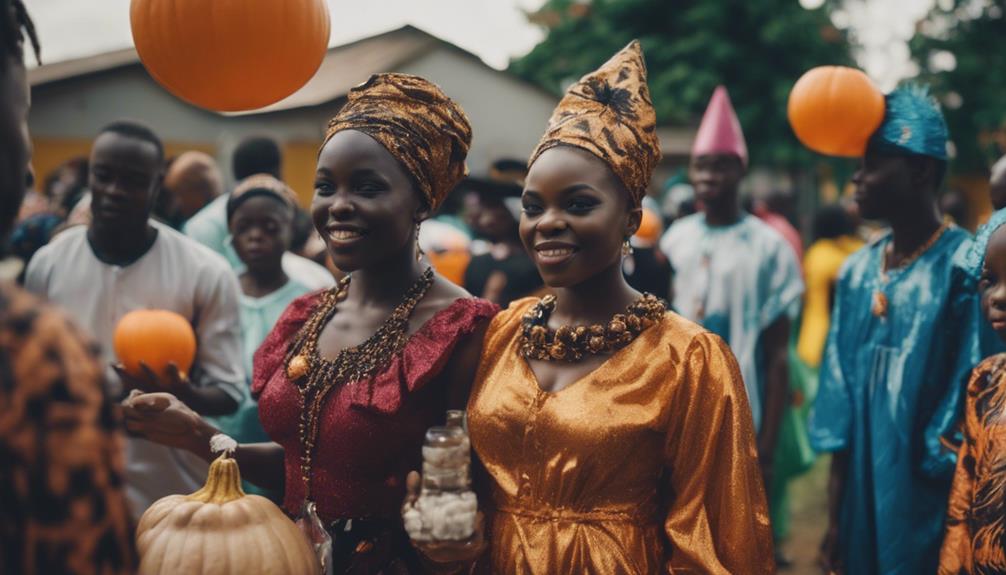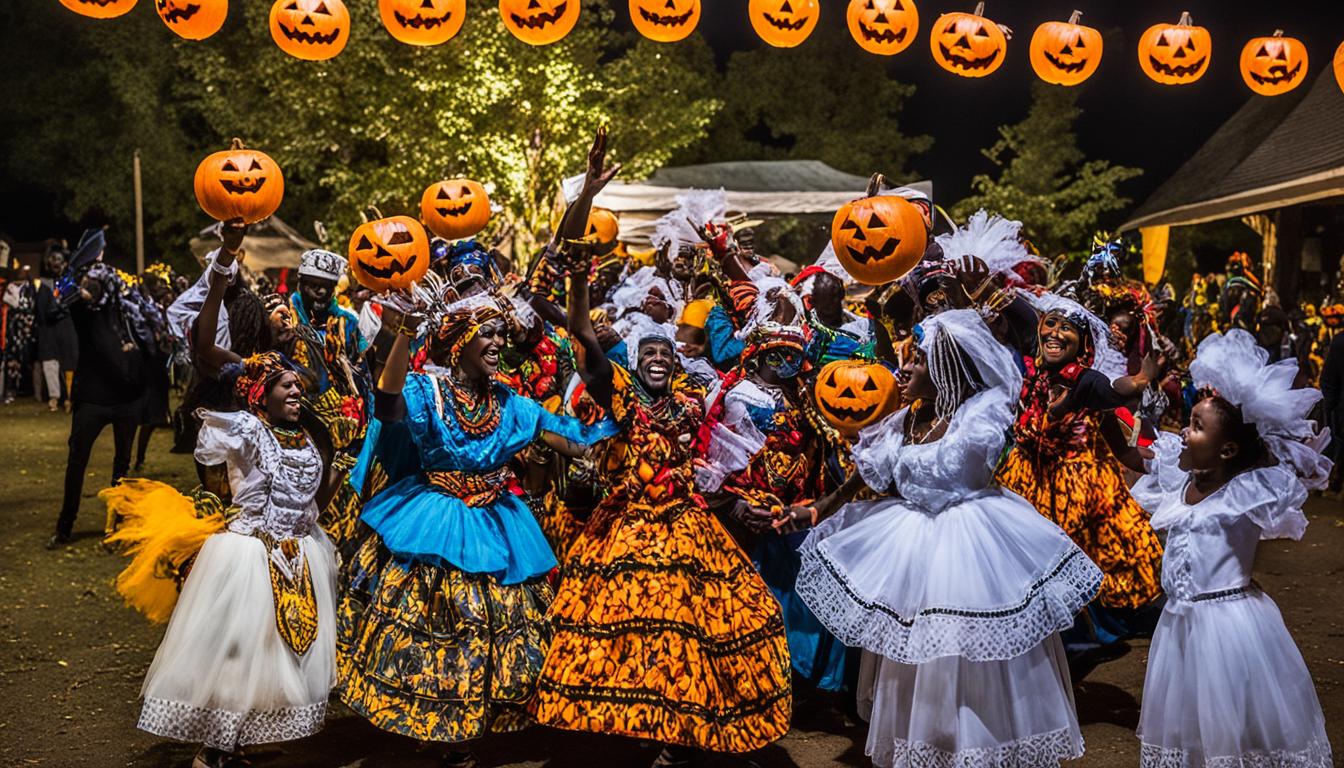In Scandinavia, Halloween is becoming more popular as you see locals adopt American traditions like costumes, pumpkin carving, and themed parties. People blend these fun activities with existing cultural festivals, especially around All Saints’ Day, creating a unique celebration that combines spooky fun and remembrance. This growing trend shows how global influences shape local customs while respecting regional heritage. If you want to discover how these traditions continue to evolve, keep exploring.
Key Takeaways
- Halloween is increasingly embraced in Scandinavian countries, blending American traditions with local customs.
- The holiday overlaps with All Saints’ Day, combining spooky fun with remembrance rituals.
- Media and commercial influences have popularized costumes, decorations, and themed events across the region.
- Celebrations emphasize community bonding, family participation, and seasonal light traditions.
- The adaptation reflects cultural exchange, integrating global influences into Nordic cultural frameworks.

Have you ever wondered how Halloween, a holiday deeply rooted in North America, has found a growing foothold in Scandinavia? It’s a fascinating shift that reflects the region’s openness to cultural influences and the desire to embrace new seasonal traditions. Over recent years, Scandinavian countries like Sweden, Norway, Denmark, and Finland have increasingly adopted Halloween festivities, blending them with their own customs to create unique celebrations. This cultural exchange isn’t just about costumes and candy; it’s about integrating a new tradition into the local fabric while respecting longstanding seasonal rituals.
In Scandinavia, Halloween’s rise is driven by a mix of cultural influences from the United States and the global media’s portrayal of the holiday. Kids and adults alike are drawn to the fun of dressing up, carving pumpkins, and participating in themed parties. These activities resonate with the region’s existing appreciation for community gatherings and seasonal festivities. Many families see Halloween as an opportunity to connect, share laughter, and enjoy the changing seasons, especially as the days grow shorter and darker. This shift is also influenced by commercial interests, with stores stocking Halloween-themed decorations and costumes, making it easier for families to incorporate the holiday into their routines.
At the same time, Scandinavians have adapted Halloween to fit their own seasonal traditions. For instance, in some areas, Halloween overlaps with All Saints’ Day, a time when families honor loved ones who have passed away. This blending creates a richer, more meaningful celebration—combining spooky fun with respectful remembrance. Seasonal traditions like lighting candles and gathering around fires are incorporated into Halloween festivities, emphasizing the importance of light during the long, dark winter months. Additionally, local folklore and mythologies sometimes influence the themes and stories told during Halloween, giving the holiday a distinctly Scandinavian flavor.
The adoption of Halloween in Scandinavia isn’t just superficial; it’s a reflection of how cultures evolve through exchange and adaptation. You might notice that Scandinavian Halloween celebrations often emphasize community and family bonding, echoing traditional Nordic values. While the holiday’s origins are American, its integration into Scandinavian seasonal traditions shows how a new cultural influence can be woven into existing customs, creating a celebration that feels both new and familiar. As Halloween continues to grow in popularity across Scandinavia, it offers a unique window into how global influences shape local traditions, enriching the holiday while respecting regional identities. Furthermore, this evolving celebration highlights the cultural exchange that fosters understanding and appreciation of diverse customs.
Frequently Asked Questions
How Has Halloween Influenced Scandinavian Traditional Festivals?
Halloween has brought new excitement to traditional festivals by introducing trick-or-treating customs and seasonal decorations. You might notice increased use of spooky symbols, pumpkins, and themed displays during autumn. These influences blend with local traditions, making celebrations more festive and engaging. As you participate, you’ll see how Halloween’s playful spirit enhances Scandinavian festivals, creating a lively atmosphere that combines old customs with new, fun elements.
Are There Regional Differences in Halloween Celebrations Within Scandinavia?
You’ll notice regional differences in Halloween celebrations across Scandinavia. In some areas, locals focus on spooky costumes and trick-or-treating, embracing more Western customs. Elsewhere, traditions blend with local customs, creating unique celebration variations like community bonfires or themed festivals. These regional customs reflect local history and culture, making each area’s Halloween festivities distinct. Overall, you’ll find that regional differences add richness and diversity to the Scandinavian Halloween experience.
What Is the History of Halloween’s Arrival in Scandinavia?
You might wonder about Halloween’s history, which traces back to ancient Celtic festivals like Samhain, marking the end of harvest and the start of winter. Over time, its historical roots blended with cultural traditions, especially through Irish and Scottish immigrants. In Scandinavia, Halloween’s arrival is a result of this cultural integration, evolving from these origins into a modern celebration, influenced by American customs, while still retaining some of its traditional roots.
How Do Scandinavian Parents Perceive Halloween’s Cultural Impact?
You might notice that Scandinavian parents often view Halloween’s cultural significance as a fun, community-building event rather than a deeply traditional celebration. Parental attitudes tend to be positive, emphasizing safety and creativity over superstition. They see Halloween as an opportunity for kids to enjoy dressing up and engaging with neighbors, making it a modern, inclusive occasion that fosters social bonds while respecting local customs.
Are There Any Unique Scandinavian Halloween Costumes or Traditions?
You might notice that Scandinavian Halloween costumes often draw from folklore, traditional costumes, and modern influences. Kids dress as trolls, witches, or mythical creatures, celebrating their rich cultural stories. Unique traditions include carving lanterns from pumpkins or turnips and participating in community events. These customs blend ancient folklore with contemporary festivities, creating a vibrant, community-centered celebration that highlights Scandinavians’ love for their cultural heritage while embracing the fun of Halloween.
Conclusion
As you’ve seen, Scandinavia’s embrace of Halloween is like a snowball rolling downhill—growing bigger and more exciting each year. You might find yourself surprised at how this spooky holiday has woven itself into Nordic traditions, turning chilly October nights into a lively celebration. Just like the changing seasons, Halloween’s charm in Scandinavia continues to evolve, inviting you to join the fun. So, get ready—this festive wave isn’t slowing down anytime soon!










